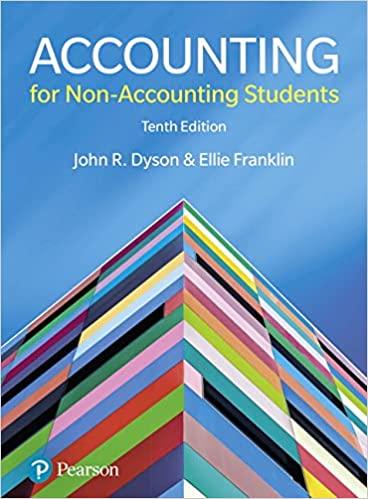January, February, March, Total





Maynard Company has prepared the following schedules and additional information: January Beginning cash balance Cash receipts Cash available Cash payments: Purchases of direct materials Direct labor Manufacturing overhead Selling and administrative expenses Interest expense Total cash payments Ending cash balance before financing Minimum cash balance desired Projected cash excess (deficiency) Financing Borrowing Principal repayments Total effects of financing Ending cash balance 1 Reference January February March Total Total sales $ 11,200 $ 15,900 $ 16,300 $ 43,400 January February March Total Cash Receipts from Customers: Accounts Receivable balance, January 1 JanuaryCash sales $ 8,960 1,120 January-Credit sales, collection of January sales in January JanuaryCredit sales, collection of January sales in February FebruaryCash sales $ 1,120 12,720 FebruaryCredit sales, collection of February sales in February 1,590 FebruaryCredit sales, collection of February sales in March $ 1,590 MarchCash sales 13,040 March-Credit sales, collection of March sales in March 1,630 $ 10,080||$ 15,430||$ 16,260||$ 41,770 Total cash receipts from customers January February March Total Cash Receipts from Customers: Accounts Receivable balance, January 1 JanuaryCash sales $ 8,960 1,120 JanuaryCredit sales, collection of January sales in January JanuaryCredit sales, collection of January sales in February February-Cash sales $ 1,120 12,720 1,590 FebruaryCredit sales, collection of February sales in February FebruaryCredit sales, collection of February sales in March $ 1,590 MarchCash sales 13,040 March-Credit sales, collection of March sales in March 1,630 16,260||$ $ 10,080||$ 15,430||$ 41,770 Total cash receipts from customers Accounts Receivable balance, March 31: MarchCredit sales, collection of March sales in April $ 1,630 January February March Total Cash Payments Direct Materials: Accounts Payable balance, January 1 0 JanuaryDirect material purchases paid in February $ 4.000 FebruaryDirect material purchases paid in March $ 4,400 4,400||$ 0 4,000 8,400 Total payments for direct materials Direct Labor: Total payments for direct labor 2,900 3,800 4,200 10,900 560 560 1,120 Manufacturing Overhead: Utilities for plant Property taxes on plant Total payments for manufacturing overhead 3,000 3,000 3,000 560 560 4,120 Reference 560 560 1,120 Utilities for plant Property taxes on plant Total payments for manufacturing overhead 3,000 3,000 3,000 560 560 4,120 Selling and Administrative Expenses: Utilities for office Property taxes on office 650 650 1,300 1,440 1,440 Office salaries 5,500 5,500 5,500 16,500 Total payments for Selling and Admin. expenses 6,940 6,150 6,150 19,240 $ Total cash payments 12,840||$ 14,510||$ 15,310$ 42,660 Acccount balances, March 31: Prepaid Property Taxes Accounts Payable $ 3,330 4,100 $ $ Utilities Payable $ 1,210 Maynard Company has prepared the following schedules and additional information: (Click the icon to view the cash receipts schedule.) (Click the icon to view the cash payments schedule.) (Click the icon to view the additional information.) Complete a cash budget for Maynard Company for January, February and March. (Complete all input fields. Enter a "0" for any zero balances. Round all amounts entered into the cash budget to the nearest whole dollar. Enter a cash deficiency with a minus sign or parentheses.) More info Maynard's beginning cash balance is $5,500 and Maynard desires to maintain a minimum ending cash balance of $5,500. Maynard borrows cash as needed at the beginning of each month in increments of $1,000 and repays the amounts borrowed in increments of $1,000 at the beginning of months when excess cash is available. The interest rate on amounts borrowed is 14% per year. Interest is paid at the beginning of the month on the outstanding balance from the previous month. Print Done












